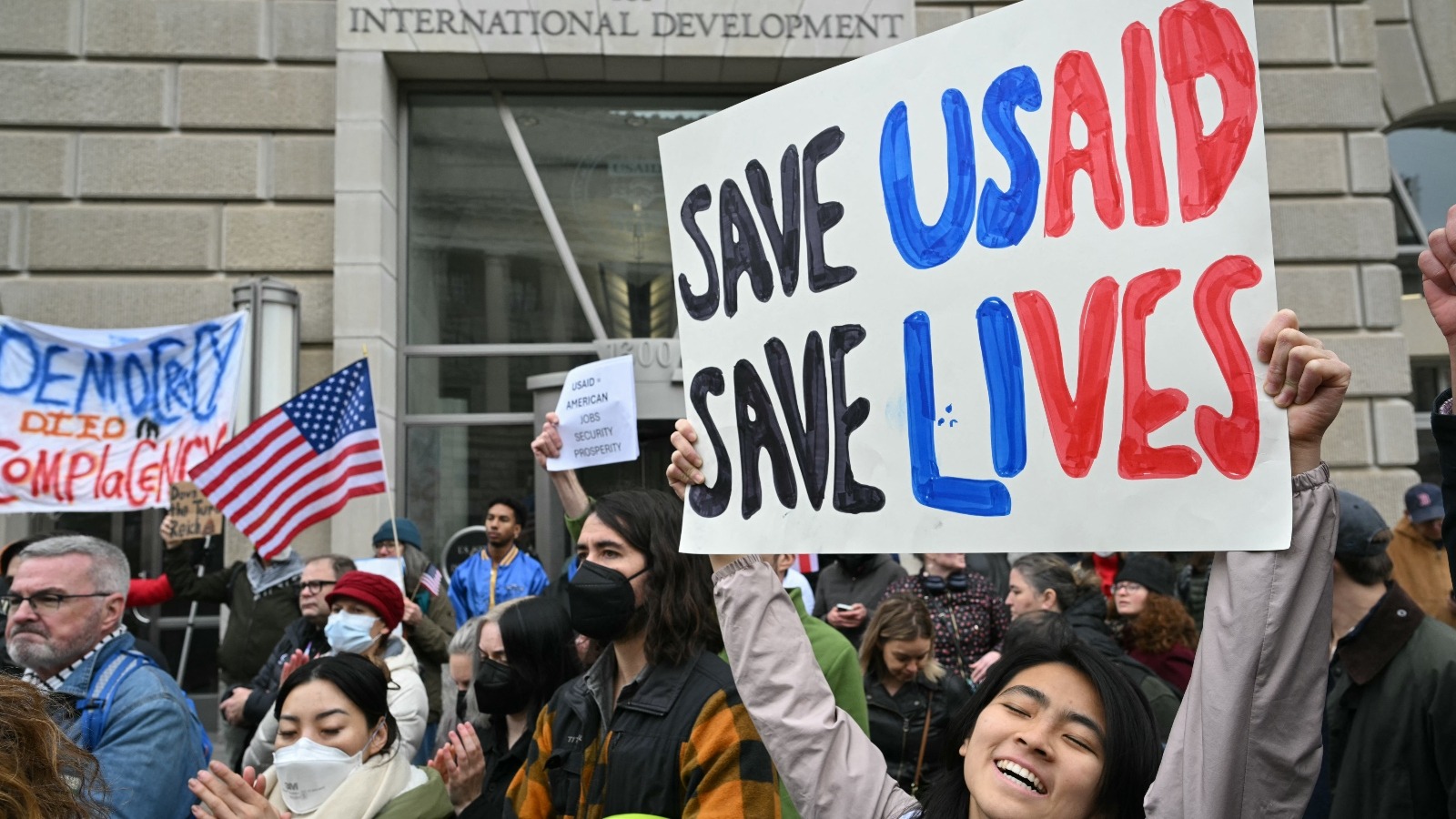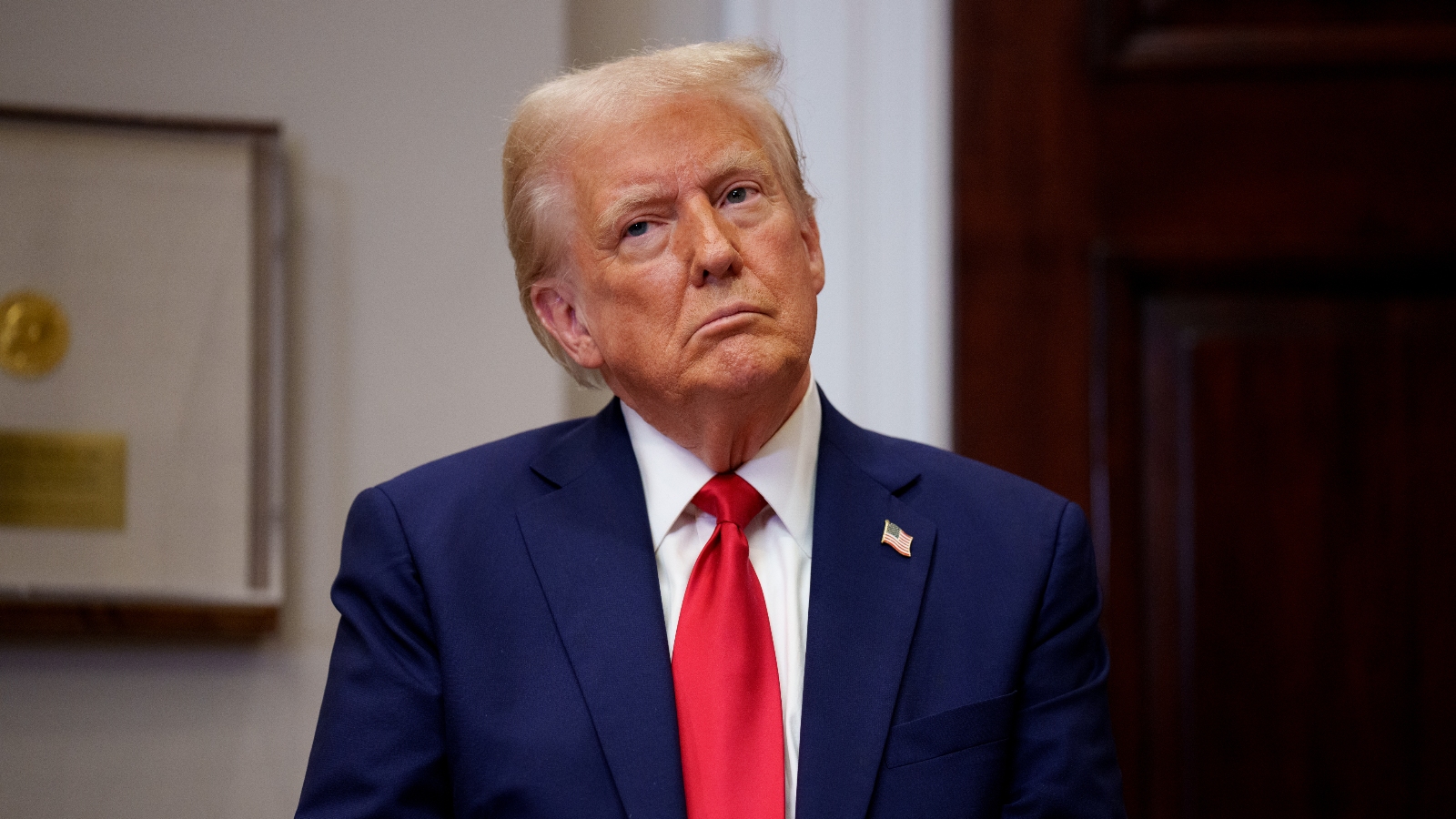As part of a broad effort to bypass Congress and unilaterally cut government spending, Donald Trump’s administration has all but shut down operations at the U.S. Agency for International Development, or USAID, the independent federal body that delivers humanitarian aid and economic development funding around the world. On his first day in office, President Trump issued an executive order pausing all USAID funding, and the agency subsequently issued a stop-work order to nearly all funding recipients, from soup kitchens in Sudan to the global humanitarian group Mercy Corps.
Since then, Elon Musk’s new Department of Government Efficiency has shut down the agency’s website, locked employees out of their email accounts, and closed the agency’s Washington office.
“USAID is a criminal organization,” Musk posted on X on Sunday. “Time for it to die.” (The agency is codified in federal law, and court challenges are likely to argue that Musk’s actions are themselves illegal.)
While criticisms of Trump’s abrupt demolition of USAID have largely focused on global public health projects that have long enjoyed bipartisan support, the effort also threatens billions of dollars meant to combat climate change. USAID’s climate-related funding helps low-income countries build renewable energy and adapt to worsening natural disasters, as well as conserve carbon sinks and sensitive ecosystems. During Joe Biden’s administration, USAID accelerated its climate-focused efforts as part of an ambitious new initiative that was supposed to last through the end of the decade. That effort now appears to have come to an abrupt end as USAID contractors around the world prepare to abandon critical projects and lay off staff.
Secretary of State Marco Rubio, who has taken over USAID as acting director, has said that Musk’s abrupt shutdown is “not about getting rid of foreign aid.” But even if USAID eventually resumes operations to provide emergency humanitarian assistance such as famine support and HIV prevention, the agency is still likely to terminate all its climate-related work under the Trump administration. The result would be a blow to the landmark Paris climate agreement just as significant as Trump’s formal withdrawal of the U.S. from the international pact. By clawing back billions of dollars that Congress has already committed to the fight against global warming, the U.S. is poised to derail climate progress far beyond its own borders.
“This is taking a torch to development programs that the American people have paid for,” said Gillian Caldwell, who served as USAID’s chief climate officer under former President Biden. “Many commitments under the Paris Agreement are funding-contingent, and that’s very much in peril.”
The United States spends less than 1 percent of its federal budget on foreign aid, but that still makes the country the largest aid donor in the world by far. USAID distributes between $40 billion and $60 billion per year — almost a quarter of all global humanitarian aid. While in recent years the largest shares of that aid have gone to Ukraine, Israel, and Afghanistan, the agency also distributes billions of dollars to Latin America, sub-Saharan Africa, and Southeast Asia, where it primarily helps promote food security, health and sanitation, and education efforts.
In 2022, Caldwell led the launch of a sweeping new “climate strategy” that sought to reposition USAID’s work over the next decade to account for climate shocks. The first part of this initiative was a country-by-country review of existing aid flows in standard areas like food and sanitation. USAID offices around the world began tweaking their operations to ensure the projects they were funding would hold up as temperatures continue to rise. For example, the agency would ensure water and sewer systems could handle bigger floods, or would plan to inoculate against diseases that might spread faster in warm weather. The effort was especially important in sectors like agriculture, which is both emissions-heavy and extremely vulnerable to the weather shocks that come with even small climactic shifts.
“You’re going to be having a lot more demands on humanitarian assistance when you’ve got extreme weather events,” she said. “The point was to make sure that every dollar we’re spending is sensible given the world we live in today.”
In addition to that review, the agency also increased its direct spending on renewable energy, conservation, and climate adaptation. The agency added dozens of new countries to its climate aid portfolio under Biden’s tenure, expanding in Southeast Asia and western Africa. USAID work has had a far greater effect on the climate fight than its raw spending, which totaled around $600 million on climate efforts in 2023, would indicate. That’s because the agency’s support has also mobilized billions of dollars from the private sector, attracting investment from renewable energy developers and insurance companies that offer drought and flood coverage to vulnerable areas abroad.
USAID’s renewable energy efforts may be some of the most resilient to Trump’s shock attack, because they don’t rely on the agency’s continued involvement. USAID has helped several countries design and hold renewable energy auctions, wherein private companies bid for the right to build new power facilities at low prices. These auctions save countries money and make it easier for them to attract private capital. In the Philippines, two USAID-sponsored auctions generated almost $7 billion in investment to build 5.4 gigawatts of solar and wind energy, enough to power millions of homes — without further USAID support.
The agency’s spending on landscape conservation is less secure. That funding prevents development on sensitive natural environments like rainforests by paying nearby residents to seek livelihoods other than the logging and grazing that could unleash massive emissions from the carbon stored in the forests. If USAID collapses, that aid will dry up, jeopardizing millions of acres of climate-friendly land.
The largest portion of the USAID’s climate-related spending goes toward disaster resilience, which doesn’t attract much investment from banks and private companies, making government support crucial. In the case of Zimbabwe, for instance, the agency funds dozens of projects a year that are intended to make the country’s farmers more resilient to drought and flooding. (This is in addition to public health and AIDS relief provided to the country, which together account for the majority of its USAID funding.)
Jekesai Njikizana / AFP via Getty Images
One of the largest disaster relief programs in Zimbabwe, a broad-based initiative to help smallholder farmers, has increased water stability for tens of thousands of households by helping them build small rain catchment systems and restore degraded soils. USAID has been funding the project to the tune of about $12 million annually since 2020, and the program was slated to continue for the next three years.
Zimbabwe’s minister for climate and the environment, Washington Zhakata, said that a shutoff of USAID funding will make it nearly impossible for the country to meet its commitments to the Paris Agreement. The country has promised not only to develop renewable energy, but also to spend huge amounts of money on drought and flood protections. It has developed a nationwide adaptation plan on the premise that future funding would be provided — and provided in large part by the countries that are responsible for the most carbon emissions historically, like the U.S.
“With limited and reduced resources, as a result of the funding withdrawal, meeting our compliance will be an uphill task,” Zhakata told Grist. “The created finance gap will see developing countries have to live with minimum resources and also to squeeze from domestic sources.”
At times, USAID has faced criticism for inefficient spending and unclear results — including for its past climate spending. The agency’s inspector general released a report last summer that criticized USAID’s previous climate initiatives for having murky data, saying that “weaknesses in the agency’s processes for awarding funds, managing performance, and communicating climate change information could impede successful implementation.”
The inspector general’s report also called USAID’s measurements of climate progress into question. In another report last year, the agency said that its new clean energy investments in Pakistan will cut around 55 million tons of greenhouse gas emissions by 2030, the equivalent of taking around 10 million average cars off the road. In Brazil, the agency said it has conserved around 118 million acres of forest land, which will sequester millions of tons of carbon. The inspector general said results like these are “highly susceptible to inaccuracies,” because the emissions results haven’t yet happened.
Some experts also argue that the agency’s humanitarian aid programs don’t focus enough on reducing long-term risk. Food security specialists who spoke to Grist during a 2023 famine in Somalia said that USAID provided emergency food assistance in the country as pastoralists lost their income, but it didn’t provide enough funding to help those shepherds adapt to future droughts. Caldwell, the former USAID climate officer, said the agency has reduced long-term risk by trying to reduce emissions on emergency aid deliveries and ensure new infrastructure can survive future disasters.
While the first Trump administration tried to zero out climate aid in every round of annual budget negotiations, some Senate Republicans resisted and kept aid flows more or less level. This time around, there’s no guarantee that Republicans in Congress will show the same resistance to Trump’s demands — and no guarantee that the administration will comply with laws requiring it to spend the money that Congress appropriates. If Musk, whom Trump has made a special government employee to conduct his Department of Government Efficiency vision, overcomes court challenges and succeeds in clearing out USAID staff and shutting down the agency’s typical operations, it will take a new administration and years of work to restore the flow of climate aid, assuming Congress votes to restore it as well.
Trump withdrew the United States from the Paris Agreement on his first day in office, but the U.S. is still a member of the broader United Nations climate convention, and only Congress has the power to withdraw it from that convention. The original framework text, which the U.S. adopted in 1992, says that rich countries like the U.S. “shall provide” aid to help poorer countries meet their climate goals.
In a statement about the USAID shutdown, Manish Bapna, head of the nonprofit Natural Resources Defense Council, connected the shuttering of USAID to Trump’s withdrawal from the 2015 Paris accord.
“Similar to the Paris climate agreement exit, this action simply narrows the window for essential climate and global health actions, while delivering no benefit to American taxpayers,” he said. “This is a curiously counterproductive and poorly timed move that comes as the world is facing grave climate, health, environmental, and economic crises — all of which will be worsened by this assault on USAID.”
Editor’s note: The Natural Resources Defense Council is an advertiser with Grist. Advertisers have no role in Grist’s editorial decisions.
Source link
Jake Bittle grist.org


